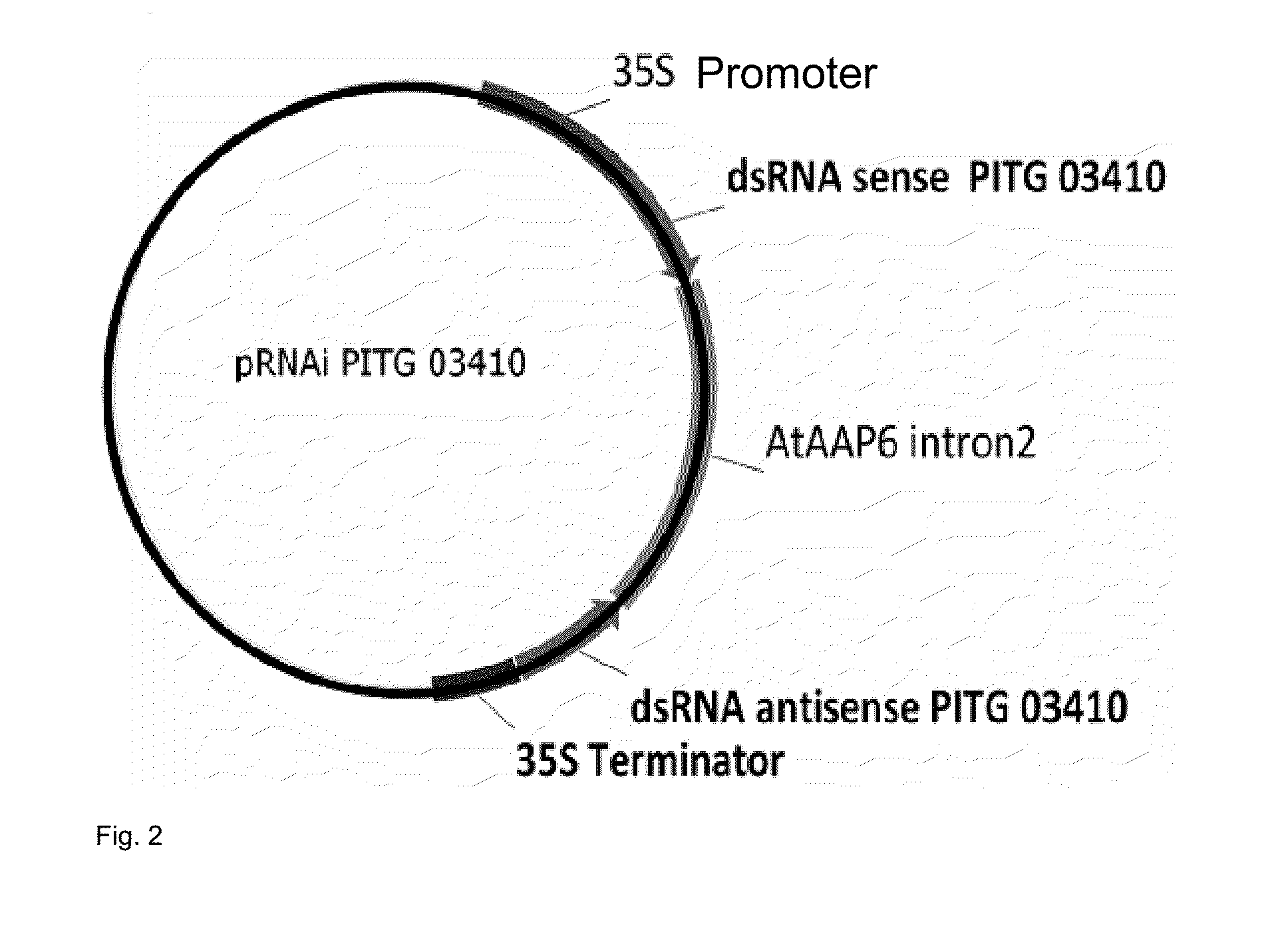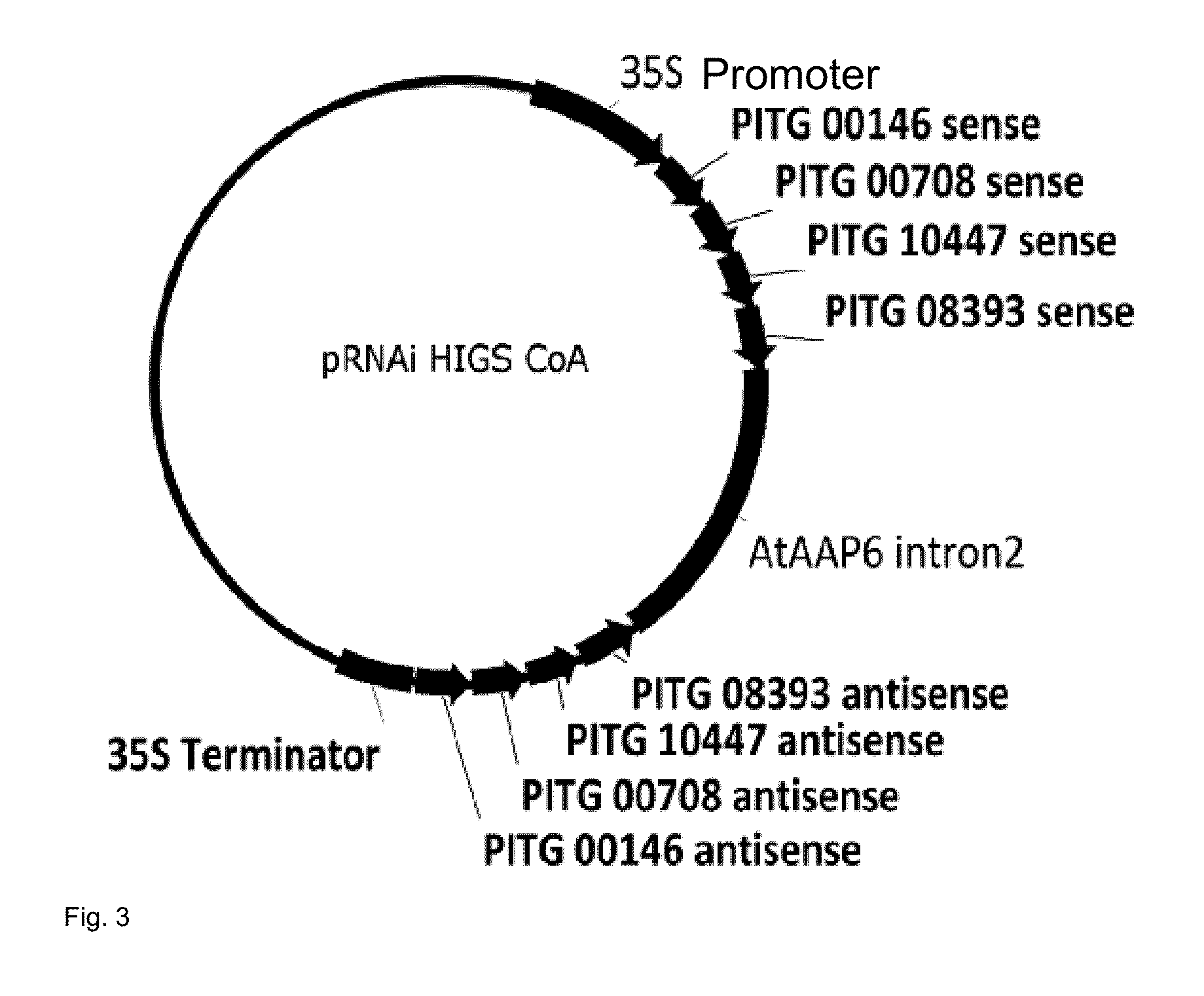Transgenic plant of the species solanum tuberosum with resistance to phytophthora
a technology of phytophthora and solanum tuberosum, which is applied in the field of transgenic plants of the species solanum tuberosum with resistance to phytophthora, can solve the problems of loss of earnings, loss of harvesting more than 20 percent, and expensive chemical plant protection means to be used
- Summary
- Abstract
- Description
- Claims
- Application Information
AI Technical Summary
Benefits of technology
Problems solved by technology
Method used
Image
Examples
Embodiment Construction
[0026]The term “gene silencing” or silencing describes processes for switching genes off. Silencing can, for example, be transcriptional or post-transcriptional. Gene silencing also includes antisense technology, RNAi, or dsRNA.
[0027]The expression of a nucleotide sequence of a target gene in Phytophthora infestans is selectively inhibited by gene silencing. A target nucleotide sequence can in this case also be a non-processed RNA molecule, an mRNA or a ribosomal RNA sequence.
[0028]The target genes were identified by (i) publically available expression studies such as microarray data regarding oomycete differentiation or infection processes, for example, and publically available data on the investigation of metabolic processes during oomycete differentiation or infection (Grenville-Briggs et al. 2005, Judelson et al. 2009a, Judelson et al. 2009b) (A), (ii) comparative bioinformatic studies coupled with pedantic analysis (BioMax Bioinformatic Framework) (B), (iii) analyses of metabol...
PUM
| Property | Measurement | Unit |
|---|---|---|
| Electrical resistance | aaaaa | aaaaa |
Abstract
Description
Claims
Application Information
 Login to View More
Login to View More - R&D
- Intellectual Property
- Life Sciences
- Materials
- Tech Scout
- Unparalleled Data Quality
- Higher Quality Content
- 60% Fewer Hallucinations
Browse by: Latest US Patents, China's latest patents, Technical Efficacy Thesaurus, Application Domain, Technology Topic, Popular Technical Reports.
© 2025 PatSnap. All rights reserved.Legal|Privacy policy|Modern Slavery Act Transparency Statement|Sitemap|About US| Contact US: help@patsnap.com



